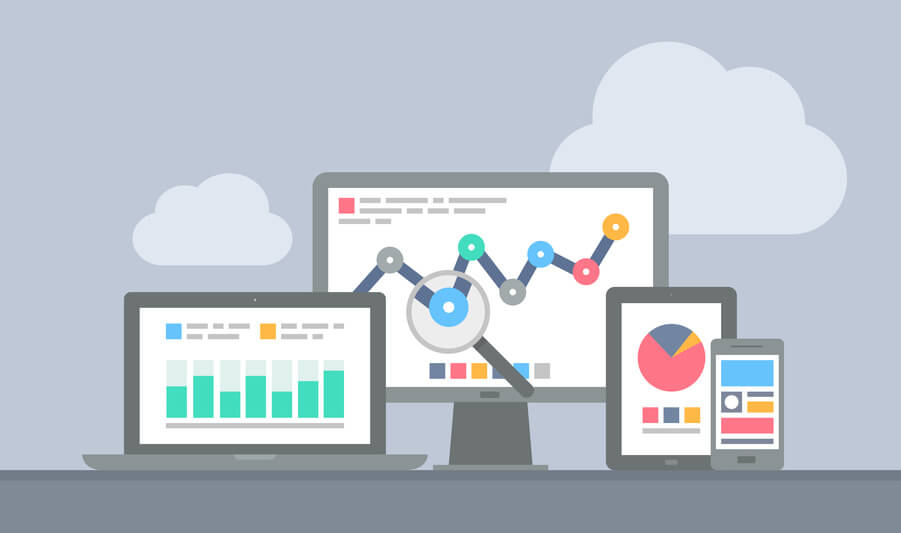Business intelligence (BI) leverages software and services to transform data into actionable intelligence that informs an organization’s strategic and tactical business decisions. BI tools access and analyze data sets and present analytical findings in reports, summaries, dashboards, graphs, charts and maps to provide users with detailed intelligence about the state of the business.
copyright by www.cio.com
 How does BI differ from BA? Business intelligence is also called descriptive analytics, in that it describes a past or current state. “It doesn’t tell you what to do; it tells you what was and what is,” says Michael F. Gorman, professor of operations management and decision science at the University of Dayton in Ohio. Compare that explanation of BI with the definition for business analytics (BA), a technology-aided process by which software analyzes data to predict what will happen ( predictive analytics ) or what could happen by taking a certain approach ( prescriptive analytics ). BA is also sometimes called advanced analytics.
How does BI differ from BA? Business intelligence is also called descriptive analytics, in that it describes a past or current state. “It doesn’t tell you what to do; it tells you what was and what is,” says Michael F. Gorman, professor of operations management and decision science at the University of Dayton in Ohio. Compare that explanation of BI with the definition for business analytics (BA), a technology-aided process by which software analyzes data to predict what will happen ( predictive analytics ) or what could happen by taking a certain approach ( prescriptive analytics ). BA is also sometimes called advanced analytics.
How business intelligence works
Although business intelligence does not tell business users what to do or what will happen if they take a certain course, neither is BI only about generating reports. Rather, BI offers a way for people to examine data to understand trends and derive insights. “So many people in the business need data to do their jobs better,” says Chris Hagans, vice president of operations for WCI Consulting, a consultancy focused on BI. Hagans points out that business intelligence tools streamline the effort people need to search for, merge and query data to obtain information they need to make good business decisions.
Where BI is currently used
For example, a company that wants to better manage its supply chain needs BI capabilities to determine where delays are happening and where variabilities exist within the shipping process, Hagans says. That company could also use its BI capabilities to discover which products are most commonly delayed or which modes of transportation are most often involved in delays. The potential use cases for BI extend beyond the typical business performance metrics of improved sales and reduced costs, saysCindi Howson, research vice president at Gartner, an IT research and advisory firm. She points to the Columbus, Ohio, school system and its success using BI tools to examine numerous data points — from attendance rates to student performance — to improve student learning and high school graduate rates. […]
read more – copyright by www.cio.com


Business intelligence (BI) leverages software and services to transform data into actionable intelligence that informs an organization’s strategic and tactical business decisions. BI tools access and analyze data sets and present analytical findings in reports, summaries, dashboards, graphs, charts and maps to provide users with detailed intelligence about the state of the business.
copyright by www.cio.com
How business intelligence works
Although business intelligence does not tell business users what to do or what will happen if they take a certain course, neither is BI only about generating reports. Rather, BI offers a way for people to examine data to understand trends and derive insights. “So many people in the business need data to do their jobs better,” says Chris Hagans, vice president of operations for WCI Consulting, a consultancy focused on BI. Hagans points out that business intelligence tools streamline the effort people need to search for, merge and query data to obtain information they need to make good business decisions.
Where BI is currently used
For example, a company that wants to better manage its supply chain needs BI capabilities to determine where delays are happening and where variabilities exist within the shipping process, Hagans says. That company could also use its BI capabilities to discover which products are most commonly delayed or which modes of transportation are most often involved in delays. The potential use cases for BI extend beyond the typical business performance metrics of improved sales and reduced costs, saysCindi Howson, research vice president at Gartner, an IT research and advisory firm. She points to the Columbus, Ohio, school system and its success using BI tools to examine numerous data points — from attendance rates to student performance — to improve student learning and high school graduate rates. […]
read more – copyright by www.cio.com
Share this: